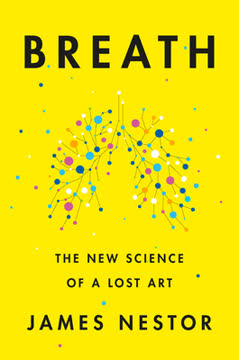Key Takeaways
1. Kabbalah: A Mystical Path to Understanding Creation
In essence, Kabbalah is founded upon mystical conceptions regarding life, death, creation, and creator.
Kabbalah's Core. Kabbalah, derived from the Hebrew word for "receiving," offers a unique lens through which to perceive reality. It's not a rigid system but a mystical outlook exploring life's deepest questions: the nature of God, the origins of creation, and the hidden meanings within the Torah. It emphasizes experiencing these mysteries rather than merely understanding them intellectually.
Two Schools of Thought. Within Kabbalah, two primary schools exist: the theosophical, emphasizing transmission from teacher to student, and the ecstatic, focusing on direct experience through altered states of consciousness. While traditional Kabbalists adhered to strict religious observance, the core teachings hold universal wisdom, accessible to all who seek a deeper connection with the Divine.
Beyond Intellect. Kabbalah is a way of life, integrating study, practice, and contemplation. It's about bringing a new level of awareness to every action, word, and thought. By immersing ourselves in kabbalistic teachings, we can unlock a new world of meaning and gain insight into the principles of creation.
2. Raising Holy Sparks: The Essence of Tikkun Olam
There is no sphere of existence, including organic and inorganic nature, that is not full of holy sparks which are mixed in with the kelippot (husks) and need to be separated from them and lifted up.
Luria's Cosmology. Isaac Luria's concept of the Shattering of the Vessels introduces the idea that divine light, represented as "holy sparks," was scattered throughout creation. These sparks are concealed within "husks" (kelippot), and our task is to liberate them. This concept is known as Tikkun Olam, repairing the world.
Sparks in Daily Life. Every aspect of our daily lives presents opportunities to raise holy sparks. The choices we make, our interactions with others, and even our leisure activities can contribute to this process. It's about bringing consciousness to every moment and acting in ways that align with the Divine.
Consciousness as the Medium. The medium through which sparks are raised is consciousness itself. By being aware of our ability to raise sparks, we can transform ordinary actions into acts of lovingkindness and harmony. This awareness is the key to unlocking the potential for Tikkun Olam in our lives.
3. Awareness: The Most Precious Gift and Key to Higher Realms
Our awareness is our most priceless gift.
Beyond the Intellect. While the mind is valuable, true wisdom transcends intellectual understanding. It comes from within, through direct experience and living in a way that invites wisdom. This involves integrating study, daily practice, and contemplative exercises.
Levels of Consciousness. The Kabbalah views the universe as a continuum of awareness, with higher and lower realms representing proximity to ultimate truth. These realms are interconnected, and everything in this world has a likeness in higher consciousness. By bestirring ourselves, we simultaneously stimulate our counterparts in other realms.
Expanding Our Minds. We can expand our awareness through simple exercises like widening our visual field or paying attention to subtle sounds. This heightened state of alertness allows us to connect with the mysteries of life and experience the presence of the Divine at all times.
4. The Garden of Eden: A Kabbalistic Cosmology, Not a Literal Tale
You beings on earth who are in deep slumber, awaken! Who among you has labored to turn darkness into light and bitterness into sweetness?
Beyond Literal Interpretation. The story of Adam and Eve is often interpreted literally, but Kabbalah views it as a cosmology, a symbolic representation of creation's dynamics. Adam and Eve represent duality, while the serpent embodies fragmentation, a necessary force for creation to occur.
The Serpent's Role. The serpent, often seen as evil, plays a crucial role in Kabbalah. It represents the force of fragmentation, without which everything would unite with God, preventing the emergence of the physical universe. This doesn't negate the concept of sin but reframes it as a necessary step in the creative process.
Two Creation Stories. The Torah presents two creation narratives: one of perfect, untroubled utopia, and another introducing the Tree of Knowledge and the potential for death. This second story highlights the importance of free will and the potential for creativity, even if it means imperfection.
5. God Is a Verb: Experiencing the Divine Through Process, Not Definition
Not only are we God's partners-God is our partner too!
Beyond Nouns. The term "God" often leads to misunderstandings by suggesting a defined entity. Kabbalists prefer to think of God as a process, "God-ing," a dynamic and interactive force rather than a static being. This perspective emphasizes our partnership with the Divine.
Interactive Relationship. God-ing is a mutually interactive verb, requiring an interdependency between two subjects, each being the object for the other. This concept shifts our relationship with the Divine from one of subservience to one of partnership.
The Divine Kiss. The Song of Songs, with its erotic imagery, is a key text for understanding our relationship with the Divine. It emphasizes the experience of merging with the Divine, a process of awakening to the realization that the presence of the Divine is revealed in the fullness of each moment.
6. Souls: Interconnected Sparks of the Divine, Awaiting Redemption
There is no sphere of existence, including organic and inorganic nature, that is not full of holy sparks which are mixed in with the kelippot (husks) and need to be separated from them and lifted up.
Sparks of Holiness. Every particle in the universe contains sparks of holiness, according to Lurianic Kabbalah. Our task is to release these sparks from their "husks" and raise them up, ultimately returning them to their original state. This is achieved through acts of lovingkindness and higher awareness.
Five Soul Dimensions. Kabbalah describes five dimensions of the soul: Nefesh (action), Ruach (emotion), Neshama (intellect), Chayah (life-force), and Yechidah (unity). Each dimension relates to a different world of consciousness, with the higher levels being more closely connected to the Divine Source.
Purity of the Soul. The upper levels of the soul (Neshama, Chayah, and Yechidah) always remain pure, regardless of our actions in this world. Our task is to purify the lower levels (Nefesh and Ruach) through conscious living and acts of lovingkindness. This purification process continues even after death.
7. Fate and Miracles: Navigating the Interplay of Destiny and Free Will
The Holy One has disposed all things in such a way that everything in this world should be a replica of something in the world above.
Influence of Mazzal. Fate, often referred to as "mazzal" (luck or the stars), influences our lives. However, free will allows us to alter our destiny. By engaging in activities that raise consciousness, we can modify our fate and align ourselves with the Divine.
Interconnectedness. The concept of interconnectedness is a fundamental teaching of Kabbalah. Every action, word, and thought reverberates throughout the universe, affecting not only our own lives but also the lives of others. This understanding emphasizes the importance of conscious living.
Miracles. Miracles are not random events but are built into the fabric of creation. They represent a higher level of reality that supersedes our limited perception of nature. By expanding our consciousness, we can become more attuned to the miraculous nature of existence.
8. Angels and Demons: Forces Shaping Our Reality
There is a realm above in supernal holiness, and a realm below.
Metaphysical Magnets. Angels and demons are not entities but forces that influence our lives. Angels represent the God realms, while demons represent the satanic realms. Our actions, words, and thoughts determine which forces we attract.
Interconnectedness. Everything in the universe is interconnected, and every action has a corresponding reaction in other realms. By being mindful of our actions, we can influence the balance of forces in the universe.
Angelic and Demonic Qualities. Angels are associated with positive qualities like grace, healing, and truth, while demons are associated with negative qualities like confusion, destruction, and fear. By cultivating positive qualities and minimizing negative ones, we can align ourselves with angelic forces.
9. Good and Evil: A Dance of Light and Shadow, Requiring Discernment
When the Holy One puts on Its 'crowns,' It receives them from above and below.
Beyond Dichotomy. Good and evil are not separate entities but interconnected aspects of creation. Evil is not something to be eradicated but a force that can be transformed into good. This requires discernment and a willingness to see the spark of holiness within everything.
The Nature of Evil. Evil is defined as a force that dims the light of the Divine. It is not inherent in things but arises from a lack of awareness. By increasing our awareness, we can transform darkness into light and bitterness into sweetness.
The Importance of Forgiveness. Forgiveness is the most excellent quality in human experience. It allows us to transcend anger, hatred, and the desire for revenge, bringing us closer to the Divine.
10. Dying and Death: Transitions, Not Endings, Requiring Compassion
The Holy One has disposed all things in such a way that everything in this world should be a replica of something in the world above.
Beyond Fear. Death is not an end but a transition to other realms of reality. By understanding the process of dying and the journey of the soul, we can alleviate our fear and approach death with compassion.
The Soul's Journey. After death, the soul undergoes a process of purification and ascends to higher realms. The living can support this process through prayer, acts of lovingkindness, and by honoring the memory of the deceased.
Interconnectedness. Even in death, we remain connected to the Divine Source of life. By embracing this interconnectedness, we can find comfort and meaning in the face of loss.
11. The Path of the Tzaddik: A Journey to Jewish Enlightenment
The wisdom of philosophy ends with the physical world. Beyond the stars, it can only imagine God’s Essence. There are actually many levels of universes beyond this, but this truth is only found in the Kabbalah.
A Structured Path. The path of the Tzaddik, or righteous one, is a structured journey to Jewish enlightenment. It involves cultivating specific qualities and engaging in practices that raise consciousness.
Twelve Steps to Enlightenment. The path consists of twelve steps: learning, respect, generosity, lovingkindness, moderation, purity, joy, selflessness, awe, equanimity, extraordinary mind-states, and life eternal (God consciousness). Each step builds upon the previous one, leading to a deeper understanding of the Divine.
Continuous Process. The path of the Tzaddik is not a destination but an ongoing process of growth and transformation. By embracing this journey, we can bring a new consciousness to the world and experience true peace in our times.
Last updated:
Review Summary
God Is a Verb is highly praised for its accessible introduction to Kabbalah and Jewish mysticism. Readers appreciate Cooper's clear writing, thought-provoking ideas, and practical spiritual exercises. Many find the book life-changing, offering new perspectives on God, Judaism, and personal growth. The mix of traditional Jewish wisdom with elements of Eastern philosophy resonates with diverse readers. While some criticize the title as misleading or find certain sections less engaging, most reviewers consider it a profound, inspiring work that bears rereading and ongoing contemplation.
Similar Books










Download PDF
Download EPUB
.epub digital book format is ideal for reading ebooks on phones, tablets, and e-readers.




